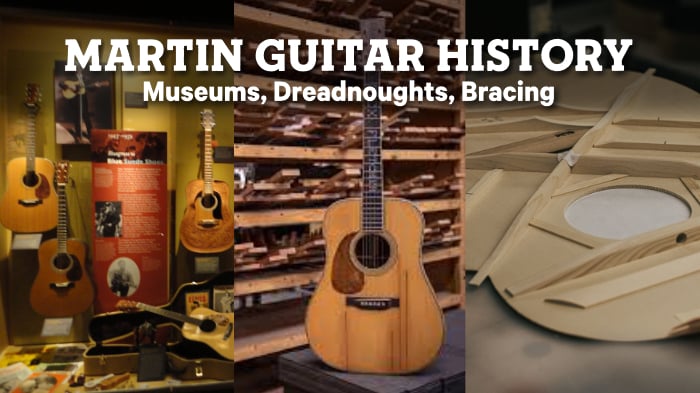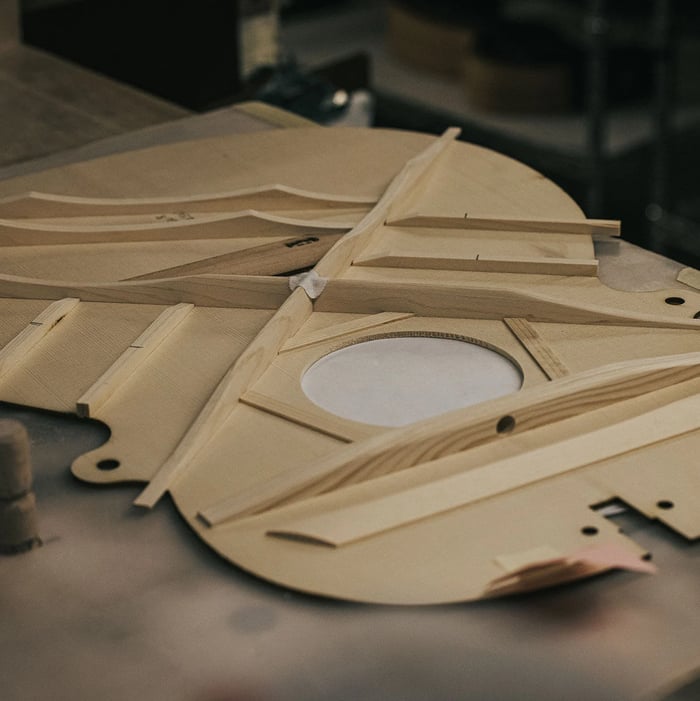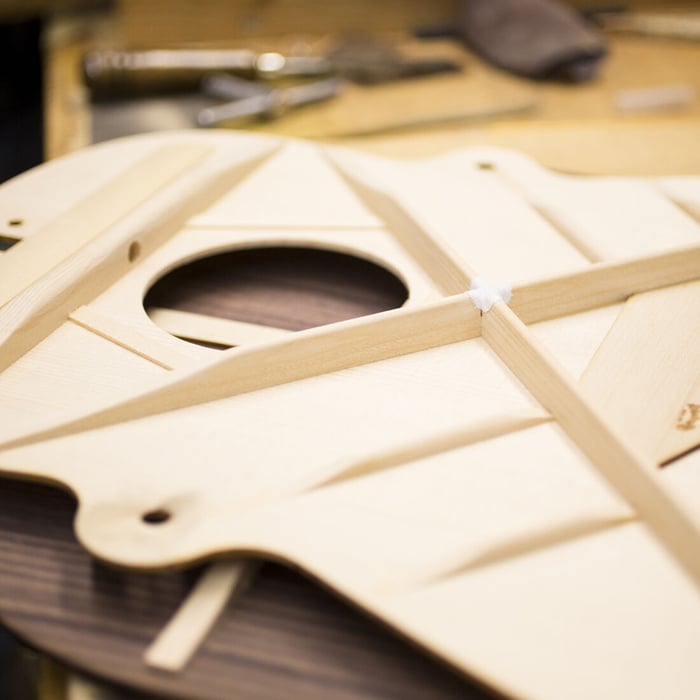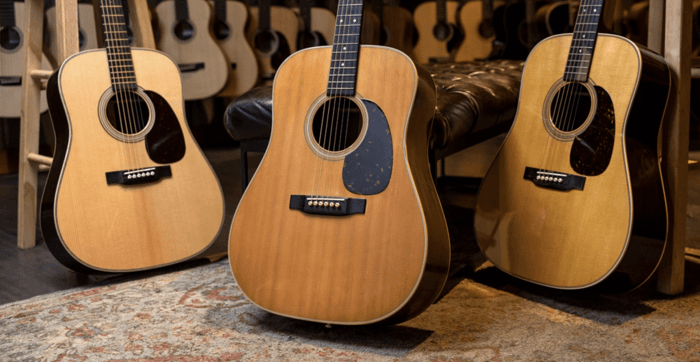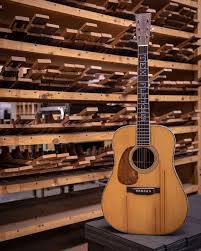When you step into the Martin Guitar Museum in Nazareth, Pennsylvania, you’re walking into nearly two centuries of innovation, craftsmanship, and tradition. Martin Guitar history is filled with pivotal moments that not only shaped the company but also defined the sound of the acoustic guitar worldwide. From the earliest use of X-bracing to the introduction of the dreadnought, the Martin Guitar story is one of bold innovation and timeless design.
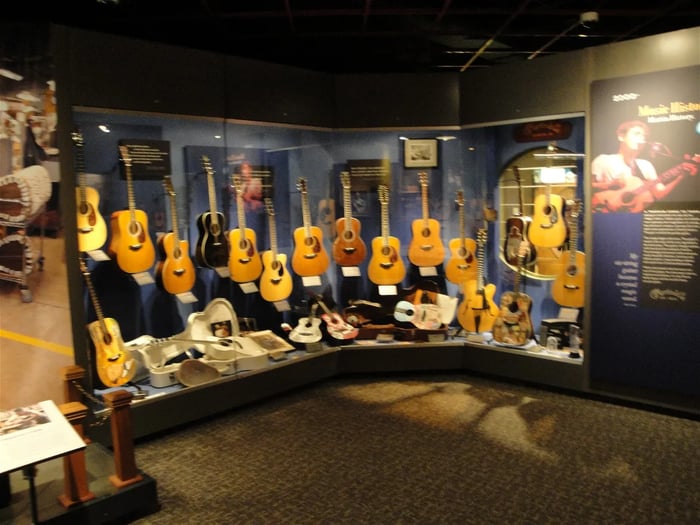
Recently, a guided walk through the museum highlighted three of the most influential instruments in Martin Guitar history. Each of these guitars represents a turning point in acoustic guitar design and continues to inspire builders and players to this day.
The Birth of X-Bracing: The Size 1 Guitar of 1843
When discussing Martin Guitar history, there’s no innovation more important than the invention of X-bracing. Before this development, most guitars were built with ladder bracing or fan bracing. These designs worked well for gut strings but lacked the strength needed for the steel strings that would soon become standard.
In 1843, Christian Frederick Martin Sr. created what is now recognized as the earliest known X-braced guitar, famously connected to Madame Delores de Goñi, a Spanish guitarist who spent time with the Martin family in Pennsylvania. Legend has it that Martin, frustrated that she preferred her Spanish guitars, secretly measured her instrument and built a new guitar of identical size but with his innovative X-bracing pattern.
The result was revolutionary. X-bracing distributed string tension more evenly across the top, providing the perfect balance of strength and resonance for steel strings. This advancement became the cornerstone of Martin Guitar history, as nearly every flat-top acoustic guitar built since has borrowed from this design.
Madame de Goñi loved the instrument and endorsed Martin, helping spread its reputation throughout the music world. To this day, the 1843 Size 1 model remains one of the most historically significant guitars in Martin’s story, marking the birth of what many consider the first truly American guitar.
The Dawn of the Dreadnought: The 1916 Oliver Ditson Model
Another milestone in Martin guitar history came with the creation of the dreadnought. Today, the dreadnought is arguably the most recognizable acoustic guitar shape in the world, but its origins date back to the early 20th century.
Around 1916, Martin partnered with music publisher Oliver Ditson to produce large-bodied guitars unlike anything else available at the time. These early dreadnoughts were built as 12-fret models with fan bracing and were marketed under the Ditson brand rather than Martin’s own. Despite their forward-thinking design, they didn’t immediately gain popularity and were discontinued after a few years.
However, the foundation had been laid. The dreadnought’s bigger body offered more volume, bass response, and projection—qualities that would later make it the go-to choice for bluegrass, folk, and country musicians. When Martin reintroduced the dreadnought under its own name in the 1930s, it quickly became a cornerstone of the company’s identity.
Looking back, that 1916 Ditson dreadnought marks a pivotal chapter in Martin Guitar history. It represents the experimental spirit that allowed Martin to push past traditional guitar design and create an entirely new standard for acoustic instruments.
The 1934 D-42: Defining the Modern Acoustic Guitar
If one guitar silhouette represents the acoustic guitar in popular culture, it’s the dreadnought with 14 frets clear of the body. In Martin Guitar history, this leap came in 1934 with the D-42 made for Tex Fletcher.
What makes this guitar so significant is that it’s the earliest known example of a 14-fret dreadnought. Until then, dreadnoughts had featured 12-fret necks, but as players demanded more access to higher notes, Martin adapted. The result was a design that not only offered more playability but also cemented the look of the acoustic guitar for generations to come.
The Tex Fletcher D-42 is also unique in its own right. Originally begun as a D-45 for another customer, the guitar was repurposed for Fletcher with custom left-handed details and ornate inlays. Despite its unusual journey, it became a landmark instrument in Martin Guitar history, blending tradition with innovation in a way that continues to define the company’s legacy.
Why These Guitars Still Matter
Each of these instruments—the 1843 Size 1, the 1916 Ditson dreadnought, and the 1934 D-42—captures a key turning point in Martin Guitar history. Together, they highlight three essential themes that have guided Martin for nearly 200 years:
Innovation grounded in tradition. From X-bracing to body shapes, Martin has always pushed boundaries while respecting craftsmanship.
Adaptability. Whether responding to changing musical styles or player demands, Martin has continually refined its designs.
Cultural impact. These guitars didn’t just shape Martin—they influenced how the world sees and hears the acoustic guitar.
When players pick up a Martin today, they’re holding not just an instrument, but the legacy of these breakthroughs. Whether strumming a modern dreadnought, picking a vintage-inspired OM, or playing a custom shop masterpiece, the DNA of these historic guitars lives on.
The Ongoing Legacy of Martin Guitar History
Visiting the Martin Guitar Museum is a reminder that guitar history isn’t just about old instruments—it’s about living traditions that continue to inspire. The innovations born in Nazareth have spread across the world, influencing countless guitar makers and musicians.
From the first X-braced guitar in 1843 to the dreadnought models that dominate stages today, Martin Guitar history tells the story of how one company’s dedication to excellence helped define an entire instrument family. And while technology and styles may evolve, the principles laid down by C.F. Martin Sr. and carried on by his successors continue to shape the guitars we know and love.
These landmark instruments from the Martin Guitar Museum highlight how a few bold innovations reshaped the entire guitar world. Beyond the technical innovations, what makes these guitars truly remarkable is their cultural influence. From concert halls to living rooms, Martin instruments have shaped the way people experience music. Each design breakthrough not only enhanced sound and playability but also inspired generations of musicians to explore new styles and push the boundaries of acoustic performance.
For anyone passionate about acoustic music, understanding Martin Guitar history means understanding the roots of modern guitar playing itself. These iconic instruments are more than museum pieces—they are milestones in the ongoing journey of sound, craftsmanship, and creativity.


